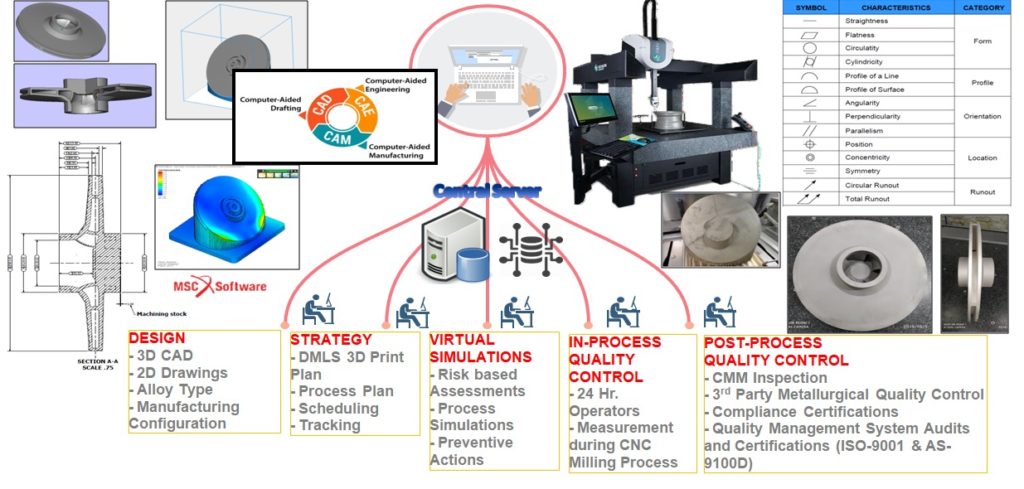Ever since its inception DMLS as technology has enabled manufacturing parts worthy of the intended final application, especially in the Oil and Gas sector. Oil and gas industries have started adopting this technology to produce parts that adhere to their requirements in terms of let’s say corrosion resistance, mechanical property, strength, durability, etc. Alloys such as SS316l, Ti64, and Ti64ELI have qualified these hurdles to help develop functional parts for this industry. Such alloys also offer prolonged service life, surface hardness for wear and tear, etc. However, there has been a very immediate requirement to print certain martensites like SS420, SS410S, and duplex steels, etc. Objectify Technologies has been at the forefront to 3D print such parts for the Oil and Gas sector. Some of the many parts are shown below



In process industries, parts need to be corrosion resistant and should be able to withstand the effects of acids and bases in some cases. There is a wide range of alloys that we use that have qualified for the Process sector which is SS316L, Ti64, Ti64ELI, and Copper. However, for a larger scale adoption catering to more critical components certain alloys equivalent to martensites like SS420, SS410S, etc are required and duplex steels as well.


While in the gas and steam turbine industries requirement for higher service temperatures requires alloys to be able to withstand higher temperatures. Alloys such as In625, In718, Ti64, Ti64ELI, and CM 247 are currently used. While nickel superalloys and Titanium Aluminides also need to develop for printing.



The above table shows some of the materials that we print and recommend to the Oil and Gas industries. There are more alloys in developmental stages its qualification will further increase the reach for manufacturing a wider range of parts for the Oil and Gas sector.
We now have to understand the difference between the supply chains of the conventional manufacturing and additive manufacturing industries. The conventional supply chain is much more capital intensive with fixed automation and with very limited flexibility to handle continuous changes. While the Additive manufacturing supply chain is low capital intensive with flexible automation. The best part about this is the flexibility it offers to handle continuous changes. The maintenance of a physical inventory is a challenge for industries. Rental costs for the huge storage space increase the costs for industries. While Additive manufacturing maintains a digital inventory, therefore, there is no waste of capital and space. The image below shows Objectify’s digital ecosystem to make digital twins.

In India and abroad Oil and Gas industries are slowly adopting this technology and have been successful in testing various parts manufactured using AM. They have found these parts to be successful for their end-use. We are slowly seeing a trend for the adoption of AM in large Oil and Gas companies in various parts of the globe and Objectify technologies has been a key partner in enabling this paradigm shift.
